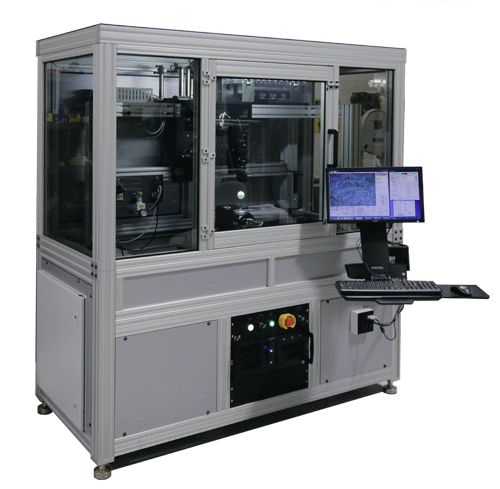Fiber Laser Systems
With average powers in excess of 50kW, fiber lasers have taken the heavy industry by storm, for thick metal cutting and welding applications. Additionally, q-swicthed fiber lasers can be found in a number of laser marking systems. The high quality near diffraction limited beam, fiber lasers have found some niche applications in micro-machining.

Fiber Laser Systems
In a fiber laser, the active gain medium is an optical fiber doped with rare earth elements such as erbium, ytterbium, or neodymium. Advantages of fiber lasers over the other types include the following:
• Light is already coupled into a flexible fiber. This allows it to be delivered easily to a movable focusing element. This has important benefits for laser cutting, welding, and drilling of metals and polymers.
• High output power. Fiber lasers can have active regions several kilometers long, so they can provide very high optical gain. They can support kilowatt levels of continuous output power because of the fiber's high surface area to volume ratio, which allows efficient cooling.
• High optical quality. The fiber's wave-guiding properties reduce or eliminate thermal distortion of the optical path, typically producing a diffraction-limited, high-quality optical beam. Since the optical mode is defined by a fixed solid waveguide, the beam quality is maintained without need for adjustment or tuning over the life of the laser, and it is invariant over a wide range of operating conditions. This eliminates the need and cost for beam characterization after manufacture.
• Compact size. Fiber lasers are compact compared to rod or gas lasers of comparable power because the fiber can be bent and coiled to save space.
• Reliability. Fiber lasers exhibit high vibrational stability, extended lifetime, and maintenance-free turnkey operation.
• Cost. These lasers are almost cost competitive with CO₂ lasers to buy ($/W) and also to operate at lower power levels (<200 W); at higher power levels, the cost curves cross.
The fundamental wavelength of fiber lasers is between 1 and 2 µm depending on the dopant and host material. Fiber lasers are available from a few watts to multiple kilowatt output, but micromachining applications will typically use lasers with output of less than 200 W. These lasers can also be q-switched, so short, high-peak power pulses can be obtained at pulse repetition rates of tens or hundreds of kilohertz. The fundamental wavelength couples extremely well with metals, and fiber lasers have replaced other solid-state and CO₂ lasers in many applications. The significant advantages discussed before make fiber lasers the fastest growing industrial laser over the past decade, now comprising over 25% of the global industrial laser market. We typically use IPG and SPI fiber lasers with output powers from 10 W to 200 W.
Fiber lasers were first conceived in the early 1960’s, but their utility was not taken advantage of until the late 1990’s when a vast amount of money was put into development for the communications industry. Although fiber lasers were never really adopted wholesale in telecom systems, the real benefit came from development, cost reduction and robustness of the contributing components and eventually people realized that these lasers could be used for material processing and not just for data transportation. Fiber as a gain medium matured during the telecom decade in the form of amplifiers, critical to boosting data signals for transmission over hundreds of kilometers of fiber. Investment in fiber amplifiers created robust and inexpensive component technology that enabled fiber lasers to mature as industrial laser sources over the past decade. Key component technologies from the telecom industry include: high power, reliable pump diodes, environmentally robust single mode fiber packaging, mature production of doped glass fiber to high tolerances and passive fiber optic components to monitor and control optical performance.

